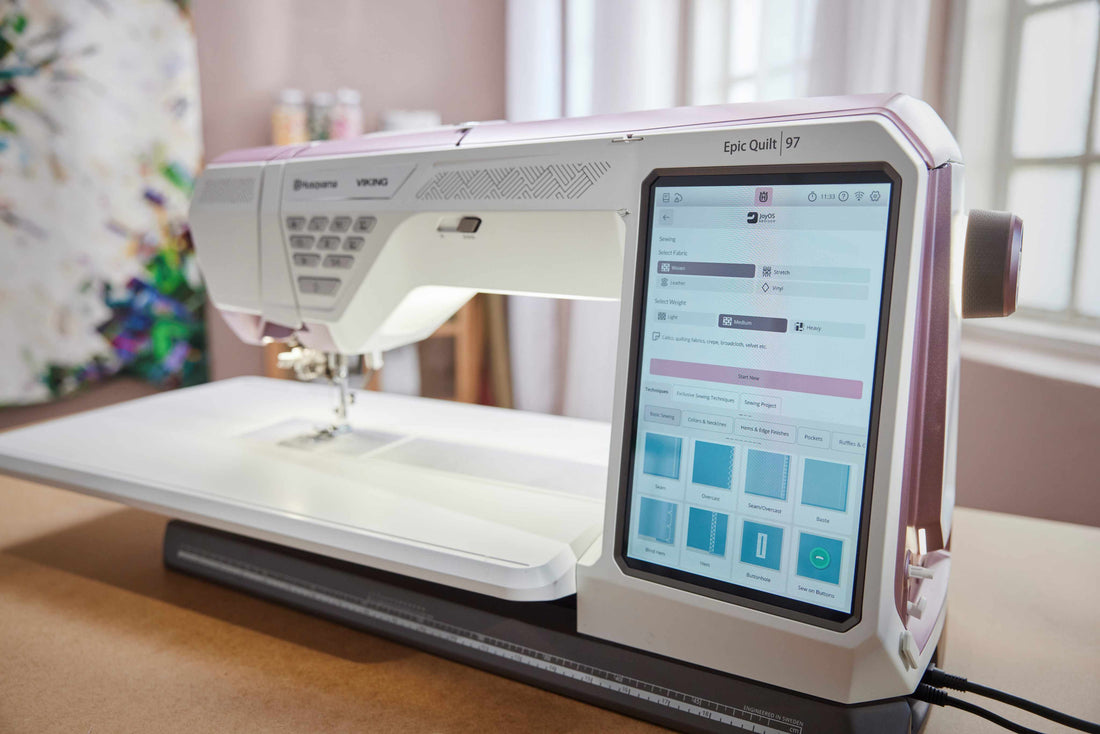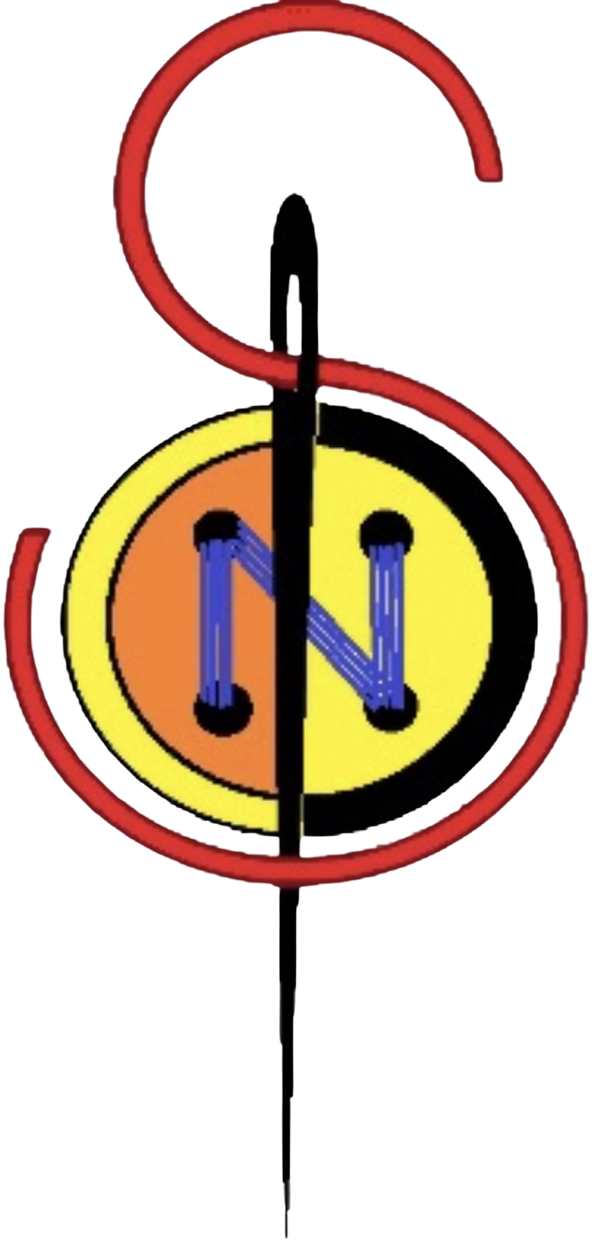
Sewing, Embroidery, Serger and Quilting Machines Guide
Share
Choosing sewing, embroidery, serger, coverstitch and quilting machines with confidence
Whether you sew garments, personalize gifts, or piece quilts, the world of sewing machines, embroidery machines, serger machines, coverstitch machines, and quilting machines can be welcoming with the right guidance. If you are exploring stitching machines and broader sewing and embroidery equipment, it may help to think about your projects, materials, and skill level first. From a computerized sewing machine for everyday tasks to a heavy duty sewing machine for thick fabrics, from a beginner embroidery machine to an advanced embroidery machine, this guide aims to make the path clear and gentle.
Along the way, you will see how a free arm sewing machine supports cuffs and hems, why a professional serger machine speeds seam finishing, and when a coverstitch machine for knits gives that polished, stretchy hem. If quilting calls to you, we will briefly compare a home quilting machine with a long arm quilting machine and note where a free motion quilting machine fits in.
Buyer’s Checklist for Sewing Machines, Embroidery Machines, and Serger Machines
Clarify Your Purpose: garments, quilting, or embroidery
It may be helpful to begin with your main projects. Garments often benefit from a reliable sewing and embroidery machine that can also handle knits with a serger. Quilters may prefer a home quilting machine with a large throat space or a free motion quilting machine for detailed work. If personalization is your focus, a monogramming machine or an embroidery machine with larger hoops may feel more fitting.
Match Materials: sewing machine for thick fabrics and knits
Consider the fabrics you use most. If you work with canvas or denim, a heavy duty sewing machine or semi professional sewing machine is often kinder to your projects and needles. For frequent knits, a coverstitch machine for knits and an overlock machine (serger) can keep seams flexible and tidy. If you are unsure, testing multiple layers under an even feed can be reassuring.
Key Features: free arm, stitches, speed, feed
- Free arm: Helpful for sleeves, cuffs, and small circular sewing. A free arm sewing machine supports accurate handling.
- Stitch selection: A computerized sewing machine may offer many utility and stretch stitches for garments, plus buttonholes.
- Speed control: Adjustable speed supports beginners and delicate tasks.
- Feed system: Even feeding and a walking foot help with quilts and slippery fabrics.
- Embroidery area: Match hoop sizes to your designs; a monogramming machine may be ample for initials and small motifs.
Accessories and Software: feet, hoops, digitizing
Sewing machine accessories can make daily work smoother. Extra presser feet, quilting guides, extension tables, and embroidery hoops are thoughtful additions. If you create your own designs, embroidery digitizing software can provide control over stitch order, density, and pull compensation, which is especially helpful on stretchy or lofty textiles.
Budget, support, and room to grow
It may be nice to choose a model that fits your current needs and allows gentle growth. If you are starting out, a beginner computerized sewing and embroidery machine with free arm can offer a friendly learning curve. If you sew frequently, a semi professional sewing machine or professional serger machine might feel more reassuring over time. Support, warranty, and local service can add peace of mind.
Browse current choices by category: Sewing machines, Embroidery machines, Sergers, Quilting machines.
Step-by-Step Guide to Choosing a Computerized Sewing and Embroidery Machine
Step 1: Define your projects and frequency
List the projects you plan to make in the next few months. Note whether they involve thick fabric, knits, quilting, or embroidery. Consider how often you expect to sew, as daily use may suggest sturdier construction.
Step 2: Pick your machine category
- Sewing machines: General construction, mending, and topstitching.
- Embroidery machines and monogramming machine options: Logos, patches, and personalization.
- Serger machines (overlock machine): Fast seam finishing and edge control.
- Coverstitch machines: Stretchy hems on knits and professional-looking finishes.
- Quilting machines: Larger throat space and smooth feed for piecing and quilting.
Step 3: Consider build, motor, and duty rating
If you plan to sew thick textiles often, a heavy duty sewing machine or semi professional sewing machine may help maintain even stitches and consistent speed. For denim or canvas, many buyers look for the best heavy duty sewing machine for thick fabrics and denim, prioritizing a strong motor, metal frame, and stable presser foot pressure. If your work is light, a compact computerized sewing machine can be a pleasant everyday choice.
Step 4: Evaluate ease-of-use and learning curve
A beginner computerized sewing and embroidery machine with free arm often provides intuitive menus, automatic needle threading, and speed control. Clear screens, built-in tutorials, and stitch suggestions can be reassuring while you develop skills. If you feel ready for more, an advanced embroidery machine with larger hoops and faster stitch rates may be a comfortable step.
Step 5: Compare accessories and embroidery software
Review included sewing machine accessories, such as presser feet for zippers, buttonholes, walking feet, and quilting guides. For embroidery, consider hoop range and whether your projects would benefit from embroidery digitizing software. The option to adjust underlay, densities, and trims can refine results on knits and plush fabrics.
Step 6: Test stitches, feed, and quilting control
Test straight and zigzag stitches across different materials, including multiple layers. Check how the feed dogs handle transitions and corners. If quilting is your focus, try free-motion on a free motion quilting machine or check the throat space of a home quilting machine to make sure your quilt sandwich moves comfortably.
Step 7: Assess support, warranty, and service
Friendly support, clear documentation, and timely service can make ownership more pleasant. It may be kind to look for tutorials, parts availability, and community resources that match your model.
Step 8: Build a shortlist and compare value
Gather two or three finalists and compare what matters most to you: stitch quality, hoop size, throat space, included accessories, and price. If two options feel similar, small differences in ergonomics and noise can still make daily sewing more enjoyable.
FAQ: Sewing Machines, Embroidery Machines, Sergers, Coverstitch and Quilting
What is the difference between a serger (overlock) and a coverstitch machine?
A serger, often called an overlock machine, trims fabric edges and wraps them with thread for clean, durable seams. It shines on raw edges, knit construction, and fast seam finishing. A coverstitch machine does not trim; instead, it creates stretchy hems with parallel lines on top and a looper chain on the underside. Many knit garments use both: the serger for construction and the coverstitch machine for knits to finish hems and necklines.
Which is better for quilting at home: a domestic quilting machine or a long-arm?
Both can be excellent, depending on space and goals. A home quilting machine suits piecing and free-motion on smaller to medium quilts, offering versatility for general sewing as well. A long arm quilting machine provides a larger frame and smoother motion for finishing big quilts with comfort. If space is limited or you enjoy piecing and garment sewing, a domestic model may feel more flexible. If quilting is your main focus and you have room, a long arm can be very supportive for larger projects.
Should I start with a beginner or an advanced embroidery machine?
If you are trying embroidery for the first time, a beginner embroidery machine can be gentle to learn, especially when combined with clear on-screen prompts and a free arm for small items. If you already know you will stitch large designs or run frequent projects, an advanced embroidery machine with bigger hoops, faster stitch speeds, and broader format support might be a considerate choice. Your budget, space, and expected use can guide the decision.
What is the best heavy duty sewing machine for thick fabrics and denim?
Preferences vary, yet many sewists look for a heavy duty sewing machine with a strong motor, stable feeding, adjustable presser foot pressure, and metal internal parts. A semi professional sewing machine with these traits can help create even stitches through multiple denim layers. Testing with your actual fabric and thread is often the kindest way to confirm performance.
Closing Thoughts and Next Steps for Sewing and Embroidery Equipment
Choosing the right sewing and embroidery equipment becomes easier when each decision reflects your projects, materials, and comfort level. A thoughtful shortlist that balances features, stitch quality, and support often brings lasting satisfaction, whether you pick a versatile sewing and embroidery machine, a dependable overlock machine, or a dedicated home quilting machine. If you would like to explore options by category, you are welcome to browse curated selections of sewing machines, embroidery machines, sergers, and quilting machines and compare features that feel most helpful to you.
